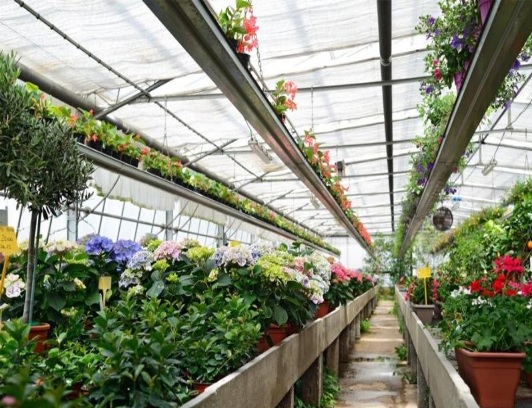
- The horticulture sector, encompassing fruits, vegetables, flowers, medicinal and aromatic plants, and plantation crops, plays a vital role in India's agricultural diversification, nutritional security, employment generation, and income enhancement for farmers.
- As the Indian economy transforms, horticulture is emerging as a high-growth sub-sector within agriculture.
Significance of Horticulture in India
|
Indicator
|
Value
|
|
Gross Cropped Area under Horticulture
|
13.1%
|
|
Total Horticultural Production (2022–23)
|
355.48 million tonnes
|
|
Share in Agriculture GVA
|
~33%
|
|
Global Ranking
|
2nd in overall horticulture production (after China)
|
|
Top in
|
Banana, Mango, Papaya production
|
|
Export Rank
|
14th in vegetables, 23rd in fruits (by value)
|
- Horticulture contributes not only to food and nutritional security but also to export earnings and value-added processing industries.
The Clean Plant Program (CPP)
- To promote sustainable and eco-friendly horticultural practices and reduce dependence on imported planting material by developing high-quality, disease-free indigenous stock.
Implementing Agencies:
- National Horticulture Board (NHB) in collaboration with the Indian Council of Agricultural Research (ICAR).
Key Components:
- Certification framework backed by the Seed Act, 1966.
- Infrastructure development to support large-scale nurseries.
- 9 Clean Plant Centres (CPCs) across the country for tissue culture, virus indexing, and propagation of elite material.
Significance:
- Ensures availability of disease-free planting material.
- Supports the Atmanirbhar Bharat vision in horticulture.
- Reduces phytosanitary risks from imports.
Government Schemes Supporting Horticulture
Mission for Integrated Development of Horticulture (MIDH)
- A centrally sponsored umbrella scheme focused on holistic development of horticulture across various crop types.
Key Sub-Schemes under MIDH:
- National Horticulture Mission (NHM) – Launched in 2005–06.
- Horticulture Mission for North East and Himalayan States (HMNEH).
- National Horticulture Board (NHB).
- Coconut Development Board (CDB).
- Central Institute of Horticulture (CIH), Nagaland.
Coverage:
-
Includes fruits, vegetables, roots, tubers, mushrooms, flowers, spices, aromatic and medicinal plants, coconut, cashew, cocoa, and bamboo.
Coordinated Horticulture Assessment and Management using Geo-Informatics (CHAMAN)
- Utilizes remote sensing, GIS, and field surveys for:
- Crop mapping
- Productivity forecasting
- Resource optimization
- Strengthens evidence-based planning and area expansion strategies.
Key Challenges in the Horticulture Sector
|
Challenge
|
Details
|
|
Lack of Planting Material Quality
|
Inadequate disease-free certified nurseries
|
|
Storage & Cold Chain Infrastructure
|
Post-harvest losses up to 20–30% in perishables
|
|
Market Access
|
Poor linkages with processing and export units
|
|
Credit & Insurance
|
Limited access for small horticulture farmers
|
|
Climate Vulnerability
|
Susceptible to erratic rains, pests, and temperature extremes
|
Way Forward: Reforms & Recommendations
|
Area
|
Suggested Reforms
|
|
Seed and Planting Material
|
Expand CPP coverage and set up state-level CPCs
|
|
Post-Harvest Management
|
Invest in cold chains, pack houses, and rural logistics
|
|
Market Reforms
|
Promote contract farming, e-NAM integration
|
|
Technology Integration
|
Leverage drones, IoT, and AI for crop monitoring
|
|
Export Promotion
|
Brand Indian fruits (like mangoes) for global GI tag markets
|
|
Skill Development
|
Train youth in horticultural entrepreneurship via KVKs
|